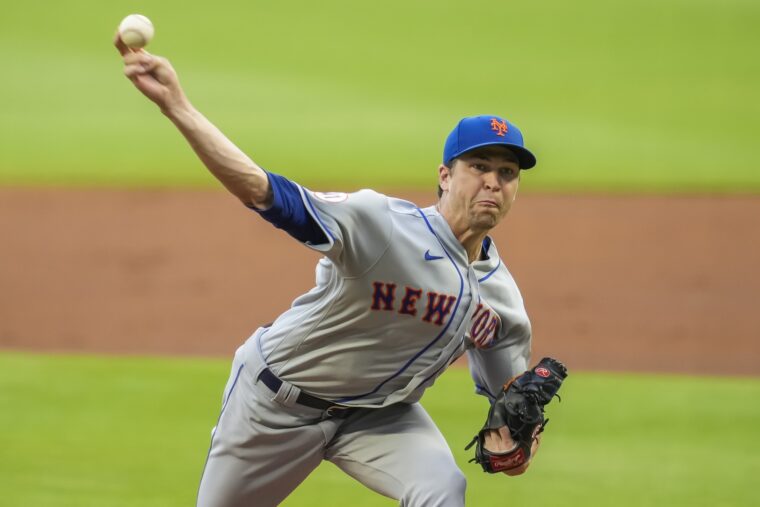
Credit: Dale Zanine-USA TODAY Sports
I’ve been with MMO for two years and written hundreds of articles. I’ve never been so happy to write one. After 99 days in the abyss, baseball is back. The lockout has finally ended. That was a wild ride, wasn’t it?
Here’s a brief summary of what happened over the last three-plus months:
- The Mets sign Max Scherzer on December 1. That night at midnight, Major League Baseball locks out the players in a “defensive move, designed to jumpstart negotiation toward a new Collective Bargaining Agreement”
- Nothing happens for 43 days, then the sides meet face-to face. That meeting lasts about an hour, and several other meetings occur in January and February, one lasting a (bad) record 15 minutes.
- When the start of spring training is in danger of being delayed, the players and owners decide to meet daily in Jupiter, Florida to try to reach an agreement by February 28. They meet for nine days, including one session that went until the early morning hours.
- They do not come to an agreement, leave Florida, and then decide to pick up negotiations in New York. Deadlines come and go, hostilities ramp up, games are “removed from the schedule” and things look bleak.
- Hopes ramp up for an agreement on March 9, only to be dashed by the owners’ late addition of the topic of an international draft. On March 10, the sides reach an agreement, however during the players’ vote, there are rumblings that the Mets are among the teams against the deal. White knuckle time ensues, as we await the results of the players’ vote.
- In the end, the new CBA passes the players by a 26-12 margin, and the owners by a 30-0 count. Baseball will have a full season, and labor talk can go away, or at least move to the far back burner for the next five years.
In my lockout articles, I always said there would be no missed games. I felt like I was in good company, with the support of the voice of The New York Mets.
Most people are too classy to say “I told you so”. Well, I’m not one of them. 😉Seriously, after the last couple of years these issues just didn’t seem existential to either side. Serious issues, yes, but too much over-intellectualizing on Twitter. Read the tea leaves. Play ball.
— Howie Rose (@HowieRose) March 10, 2022
Yes, missing games over a labor dispute in baseball would not be new. We know what happened in 1994. However, this isn’t 1994. Baseball has gone from a $3 billion industry to a $10 billion industry. MLB just signed a streaming contract with Apple TV+, with reportedly more such deals to come. There is simply too much money on the line. There were threats of canceling games, and war chests to compensate players, who said they had dug their heel in for the long term.
It was never going to come to that. Major League Baseball and the Major League Baseball Players’ Association don’t have to like each other. They know that they need each other to roll in the huge dollars that the game brings. To that end, they puffed their chests, they wagged fingers in each other’s faces, but they knew they had to work together. And they did.
To wrap up our lockout coverage, let’s take a look at the key points of the newly-minted CBA, as tweeted by Evan Drellich of The Athletic.
Some final details of a CBA where players made some notable gains:
• Pre-arb bonus pool at $50m
• Min salary: $700k, $720k, 740k, $760k, $780k
• CBT: $230m-$244m
• Draft lottery at 6 picks
• Universal DH
• Amateur draft is 20 rounds
• Player can be optioned 5 times per yr— Evan Drellich (@EvanDrellich) March 10, 2022
This is a good deal for both sides. The players started at $115 million in the bonus pool, the owners started at $5 million. They basically met in the middle. The players said all along that compensation of younger players was key for them. They got very close to their original request on minimum salary and escalations. The CBT was a compromise. The sides met in the middle on the first threshold, and the increases were closer to the owners’ position. However, instead of the draconian penalties the owners wanted, the tax rates are the same as those of the last CBA (with the exception of new tier of tax for excessive spending).
The Universal Designated Hitter creates more high-paying jobs, and could protect pitchers from injuries. That’s a win all around. The limited number of options in a season is good for the players and their stability during the course of a year.
An awful process yielded a settlement that turned out to be fair for both sides. MLB and the MLBPA gave some and got some. Neither side may be thrilled with the outcome, but both sides can live with it. Looking ahead, the give-and-take of these negotiations may pave the way for a better relationship between the players and owners. Let’s hope so, because no one wants to go through this again in five years.
That’s it for lockout coverage. Now we turn the page to real baseball news. That’s another reason that March 10 truly is a happy day.














